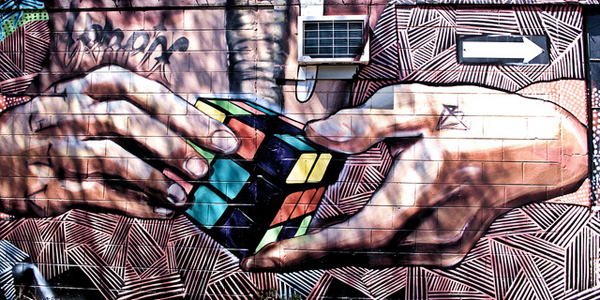
Rubik's Cube Exhibition
- Strategic counsel on a global traveling exhibition honoring the 40th anniversary of Rubik’s Cube.

Background
Professor Ernö Rubik invented the world’s most popular puzzle, the famous Rubik’s Cube, 40 years ago when Hungary was still behind the Iron Curtain. With more than 200 million Cubes legally sold to date, the Cube has become an icon, known around the world as a puzzle, design object, mechanical device, metaphor for complexity, three-dimensional mathematical model, and architectural concept. There are Cube speed contests, frequent references to the Cube in popular magazines, and many mathematical and scientific papers about the Cube.
Challenge
The Cube has inspired works of art, fashion, and design, as well as countless scientific and mathematical treatises. But there has not been a comprehensive, authoritative effort to document its origins, history, scientific, and mathematical characteristics and its social and cultural impact.
The goal was to launch an international exhibition that would travel around the world, stimulate audiences to understand the basic mathematical and design characteristics of the Cube, and demonstrate the role of design in stimulating creativity and innovation. Professor Rubik turned to AKA to determine the feasibility of such an exhibition, and to think through the project’s key elements and design.
AKA's Approach
AKA assembled a group of experts in relevant fields, including exhibition design, mathematics, computer science, and graphic design, to sketch a creative framework for the exhibition, provide research-based financial planning, and assess global development potential.
In a second phase, AKA explored institutional interest in the Rubik’s Cube exhibition in the United States and abroad. The firm reached out to senior executives of major corporations and other prospective funders to discuss the major objectives of the exhibit and to explore their interest in being involved.
AKA actively involved Professor Rubik throughout the project, working with him to shape key objectives and test conceptual and design ideas, and asking him to meet selectively with key prospects and other interested parties. Professor Rubik made his extensive archive of Cube-related materials available to AKA to support the creative briefs.
Outcomes
After extensive consultation with a variety of leading science museums in the United States and Europe, New Jersey’s Liberty Science Center, with sponsorship from Google, was selected as the initial institutional venue for the exhibition. Liberty built on the AKA creative brief to mount the exhibition, which opened in 2014 and will tour the world for five years thereafter.

